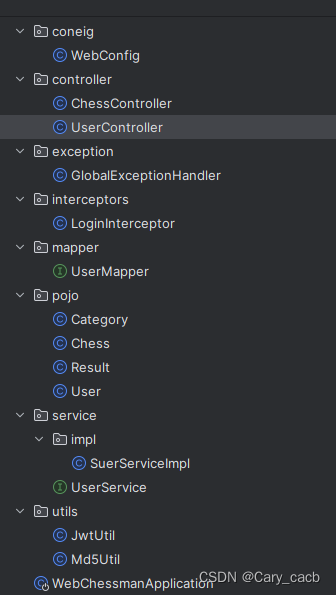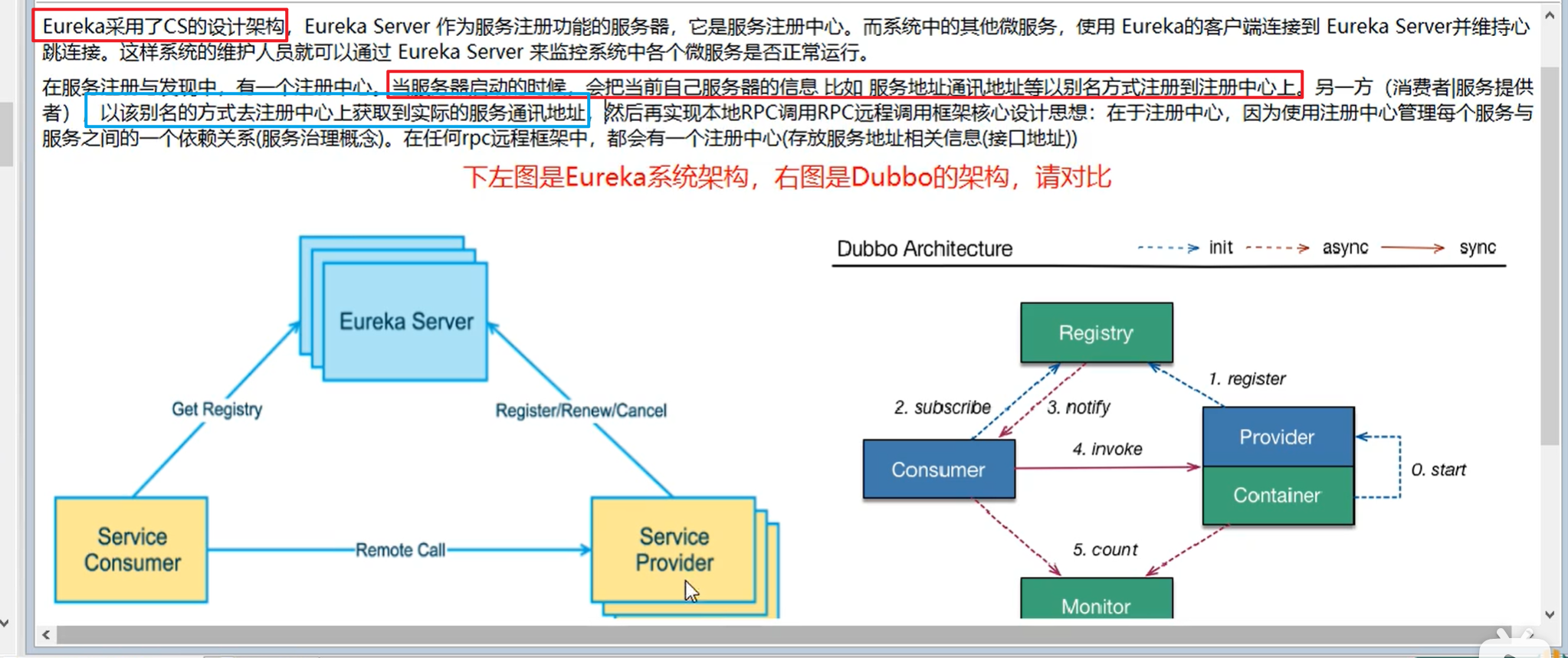本文介绍: / 如果接受此信号打印….if(signal(SIGINT, handler) == SIG_ERR){ // 注册SIGINT信号,接受后按handler要求执行,键盘输入Ctrl + C可接受exit(1);if(signal(SIGTSTP, SIG_IGN) == SIG_ERR){ // SIG_IGN即对SIGTSTP忽略exit(1);return 0;
用途:
特性:
对于一个进程,其可以注册或者不注册信号,不注册的信号,进程接受后会按默认功能处理,对于注册后的信号,进程会按自定义处理
自定义信号:
#include <stdio.h>
#include <signal.h>
#include <stdlib.h>
#include <unistd.h>
void handler(int arg){
if(arg == SIGINT){
puts("catch the SIGINT"); // 如果接受此信号打印....
}
}
int main(int argc, const char * argv[]){
if(signal(SIGINT, handler) == SIG_ERR){ // 注册SIGINT信号,接受后按handler要求执行,键盘输入Ctrl + C可接受
printf("signal error");
exit(1);
}
if(signal(SIGTSTP, SIG_IGN) == SIG_ERR){ // SIG_IGN即对SIGTSTP忽略
printf("signal error");
exit(1);
}
while(1){
sleep(1);
printf("hello worldn");
}
return 0;
}
效果:

程序发送信号:
上述发送信号是按键给程序发送信号,下面就是进程进程之间发送信号
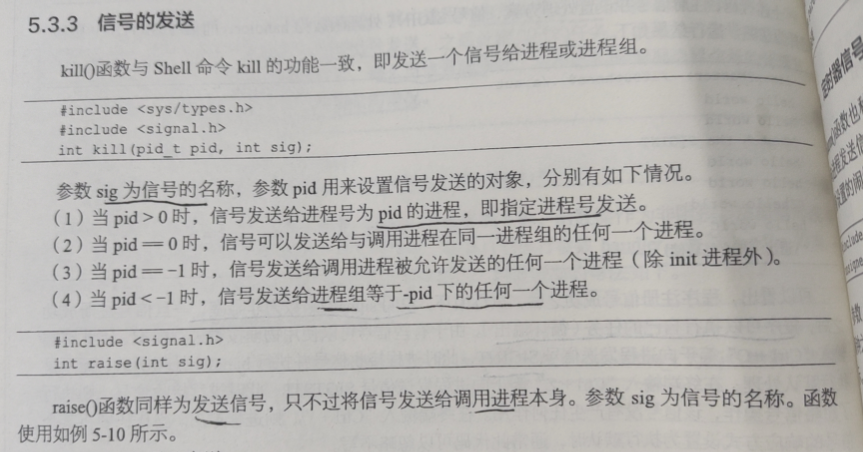
有将信号发送给其他进程也有将信号发送给本身
代码:
#include <stdio.h>
#include <signal.h>
int main(int argc, const char * argv[]){
pid_t pid;
pid = fork(); // 若pid大于0则其为创建的子进程pid
if(pid < 0){
printf("fork errorn");
}
else if(pid == 0){
printf("the child process livingn");
while(1);
}
else{
sleep(3);
printf("the parent process onlinen");
kill(pid, SIGKILL); // 结束子进程
printf("child be stoped by parentn");
printf("parent stoped himselfn");
raise(SIGKILL); // 结束本身
}
return 0;
}
效果:
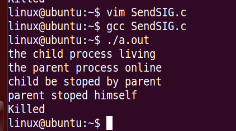
闹钟定时:
通过闹钟定时关闭进程
代码:
#include <stdio.h>
#include <unistd.h>
int main(int argc, const char * argv[]){
unsigned int ret;
ret = alarm(8);
printf("ret1 = %dn", ret);
sleep(3);
ret = alarm(3);
printf("ret2 = %dn", ret);
while(1);
return 0;
}
效果:
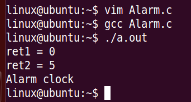
原文地址:https://blog.csdn.net/xyint/article/details/134653191
本文来自互联网用户投稿,该文观点仅代表作者本人,不代表本站立场。本站仅提供信息存储空间服务,不拥有所有权,不承担相关法律责任。
如若转载,请注明出处:http://www.7code.cn/show_694.html
如若内容造成侵权/违法违规/事实不符,请联系代码007邮箱:suwngjj01@126.com进行投诉反馈,一经查实,立即删除!
声明:本站所有文章,如无特殊说明或标注,均为本站原创发布。任何个人或组织,在未征得本站同意时,禁止复制、盗用、采集、发布本站内容到任何网站、书籍等各类媒体平台。如若本站内容侵犯了原著者的合法权益,可联系我们进行处理。

